What is Reflexology in Sydney? Origins, Benefits, and Techniques
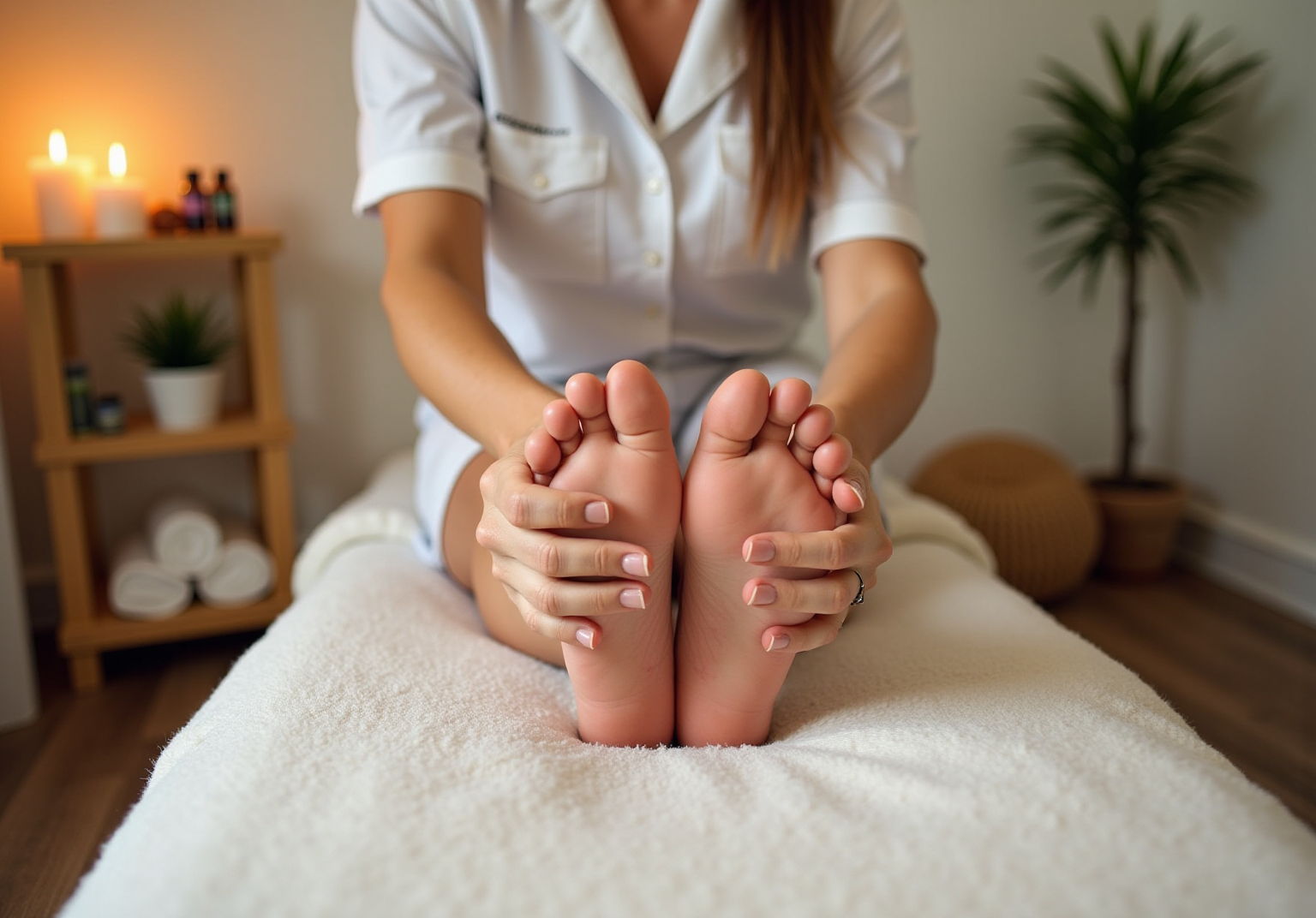
Overview
Reflexology in Sydney stands as a holistic therapy that applies pressure to specific reflex points on the feet, hands, and ears, corresponding to various organs and systems within the body. This practice promotes healing and balance, addressing common ailments effectively. The historical roots of reflexology are significant, revealing its long-standing role in wellness. Furthermore, it has been shown to reduce symptoms such as stress and fatigue, a testament to its relevance in modern wellness practices. Various techniques employed in reflexology underscore its importance as a valuable component of comprehensive health strategies.
Introduction
Reflexology stands out as a compelling holistic therapy that merges ancient wisdom with contemporary wellness practices, particularly in Sydney. By applying targeted pressure to specific reflex points on the feet, hands, and ears, this therapeutic approach is designed to stimulate healing and restore balance within the body.
As the demand for natural health solutions continues to rise, many individuals are left contemplating: how can this time-honored practice not only alleviate stress but also address a range of health issues?
Delving into the origins, benefits, and diverse techniques of reflexology unveils a rich tapestry of potential, encouraging individuals to consider its vital role in their wellness journey.
Define Reflexology: Principles and Practices
Reflexology in Sydney is a holistic therapy that applies pressure to specific areas on the feet, hands, and ears, which are thought to correlate with various organs and systems within the body. This practice operates on the principle that stimulating these reflex points can foster healing and restore balance throughout the body. Unlike traditional massage, which primarily aims at muscle relaxation, reflexology seeks to address underlying health issues by concentrating on reflex zones connected to various bodily functions.
Recent studies underscore the effectiveness of this therapeutic practice in promoting wellness. For instance, a systematic review revealed that foot therapy significantly reduced menopausal symptoms by an average of 3.41 points and fatigue by 5.84 points, showcasing its potential as a non-hormonal intervention for women facing these challenges. Furthermore, reflexology in Sydney has been recognized for its ability to reduce stress and enhance overall well-being, making it a valuable complementary therapy.
Experts in holistic therapy assert that reflexology not only promotes relaxation but also encourages the body's natural healing processes. By focusing on specific reflex areas, practitioners aim to boost circulation, alleviate tension, and restore balance, ultimately leading to improved wellness outcomes. This multifaceted approach positions reflexology in Sydney as a vital component of integrative health practices, appealing to those seeking a comprehensive path to wellness.
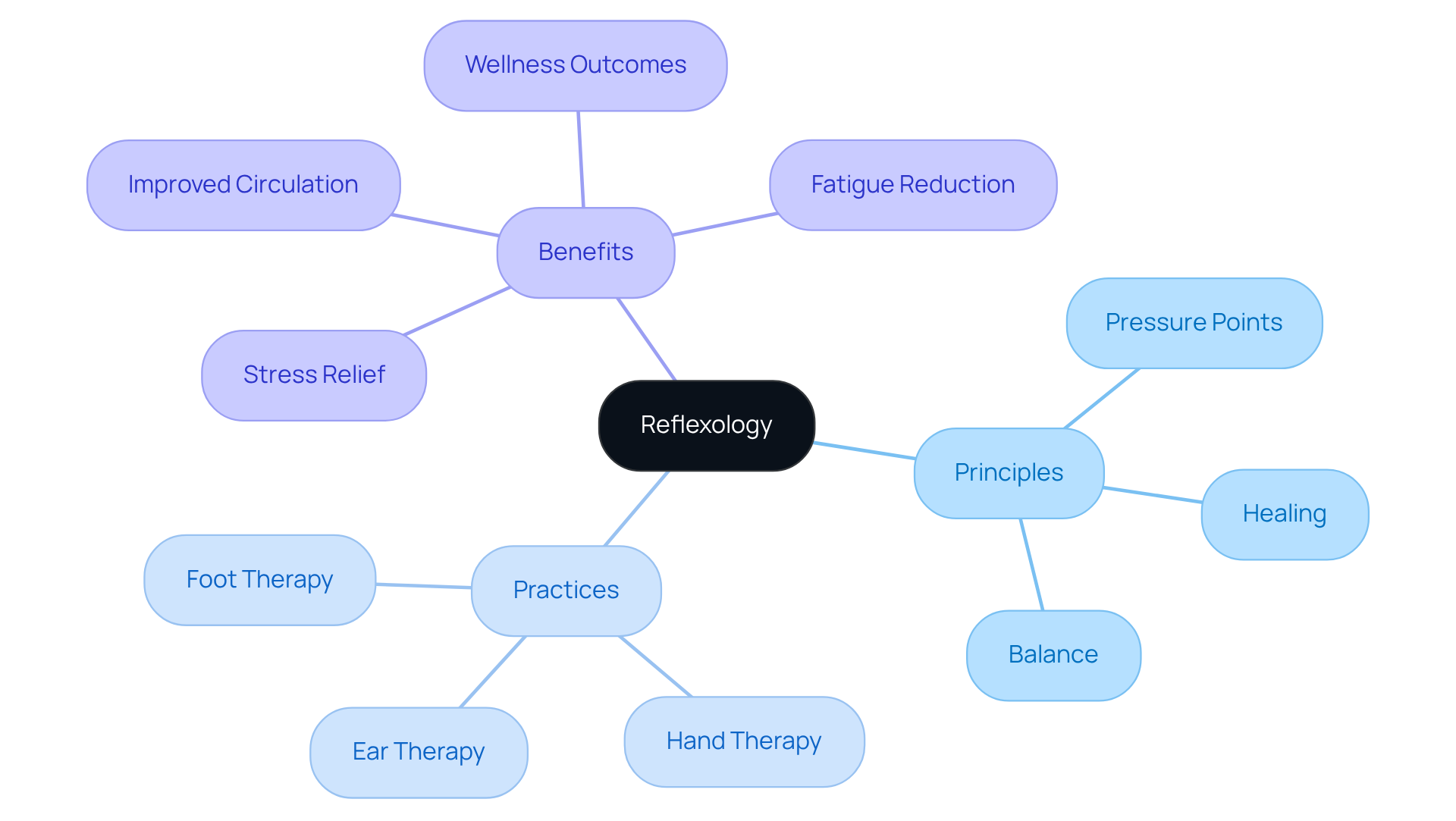
Trace the Origins of Reflexology: A Historical Perspective
The origins of reflexology, a therapeutic practice with roots extending over 4,000 years, are deeply embedded in ancient cultures such as Egypt and China. In Egypt, the tomb of Ankmahor reveals hieroglyphs that illustrate reflexology-like practices, specifically hand and palm treatments, indicating an early comprehension of reflex points. Dating back to approximately 2330 B.C., this tomb serves as a significant historical reference. Similarly, ancient Chinese methodologies integrated reflexology into their conventional medical practices, with evidence of hand and sole therapy emerging as early as 2330 B.C. These ancient practices highlighted the connection between the body's energy pathways, known as Qi, and overall well-being. They reflect a holistic belief that stimulating specific points on the feet and hands can positively impact the health of corresponding organs.
The modern practice of foot therapy gained traction in the early 20th century, primarily due to American physician William Fitzgerald, who pioneered the concept of 'zone therapy.' This innovative approach divided the body into ten longitudinal areas, providing a structural foundation for contemporary therapeutic techniques. Eunice Ingham, a pivotal figure in this domain, identified the feet as the most sensitive and responsive areas for pressure application through her research. The historical significance of reflexology in Sydney underscores its enduring relevance, bridging ancient wisdom with modern wellness practices. Furthermore, since 1984, the Reflexology Association of Australia has established standards and provided support for practitioners, underscoring the formalization and ongoing importance of reflexology in Sydney's wellness landscape.
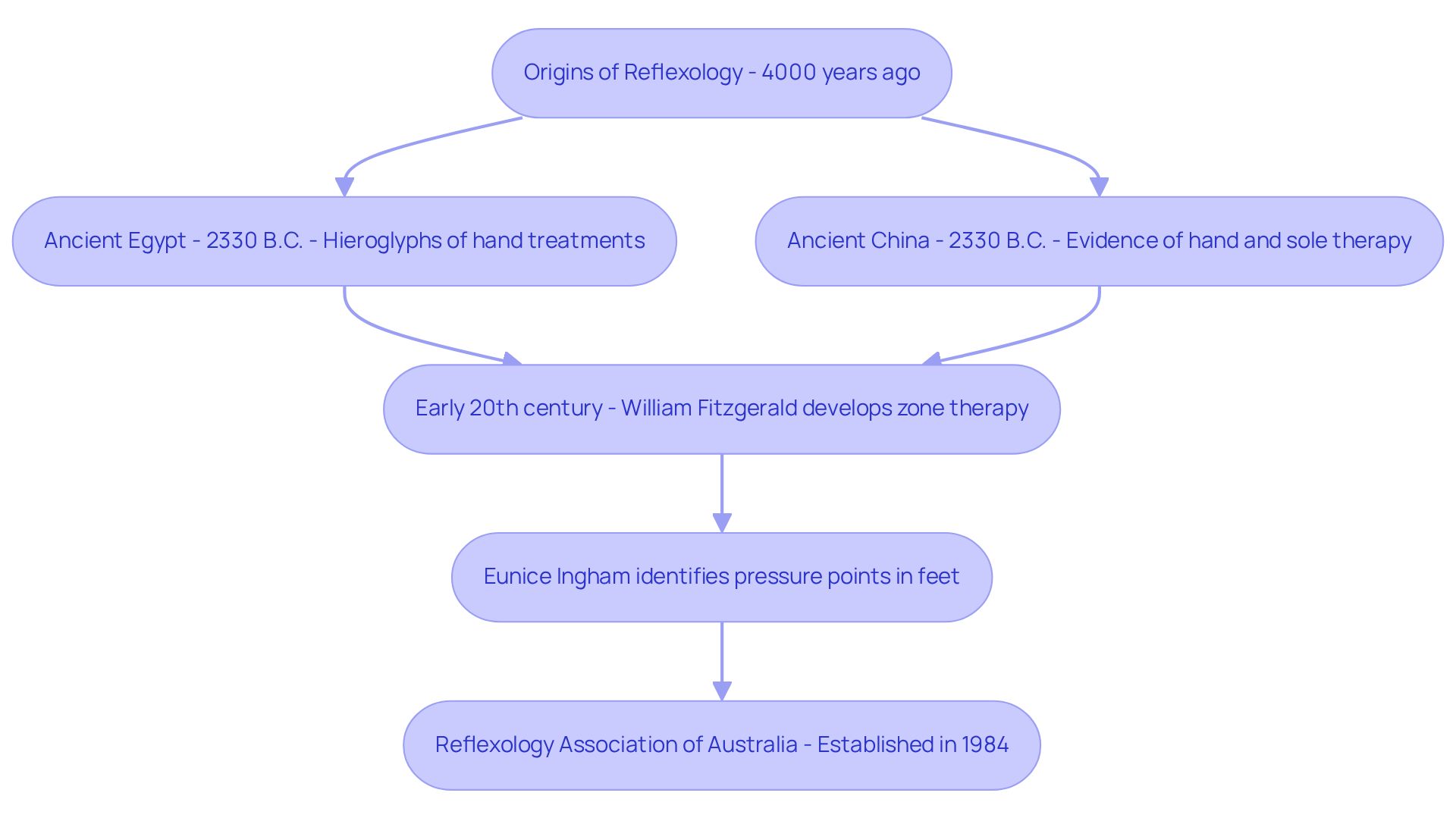
Explore the Benefits of Reflexology: Health and Wellness Impacts
Reflexology in Sydney at Tsavo Wellness provides a multitude of health benefits, including stress reduction, improved circulation, enhanced relaxation, and pain relief. By applying pressure to specific reflex points, practitioners effectively alleviate symptoms associated with various conditions, such as headaches, digestive issues, and anxiety.
Research indicates that this alternative therapy significantly enhances sleep quality and increases energy levels, contributing to overall well-being. Notably, individuals with chronic ailments often experience reduced fatigue and improved sleep following therapy sessions. Many clients report a profound sense of relaxation during and after their treatments, which fosters enhanced mental health and emotional stability.
This holistic approach to reflexology in Sydney is an invaluable addition to any wellness regimen, especially for those seeking natural and non-invasive treatments. At Tsavo Wellness, we emphasize cellular-level rejuvenation and enhanced performance, ensuring that our therapeutic services, including reflexology in Sydney, elevate your well-being.
As Claire Barnwell, a member of The Association of Reflexologists, notes, this practice provides a unique opportunity for relaxation and compassionate touch, cultivating a nurturing environment for healing. This therapeutic method not only aids in stress management but also promotes circulation, further enhancing physical and emotional balance.
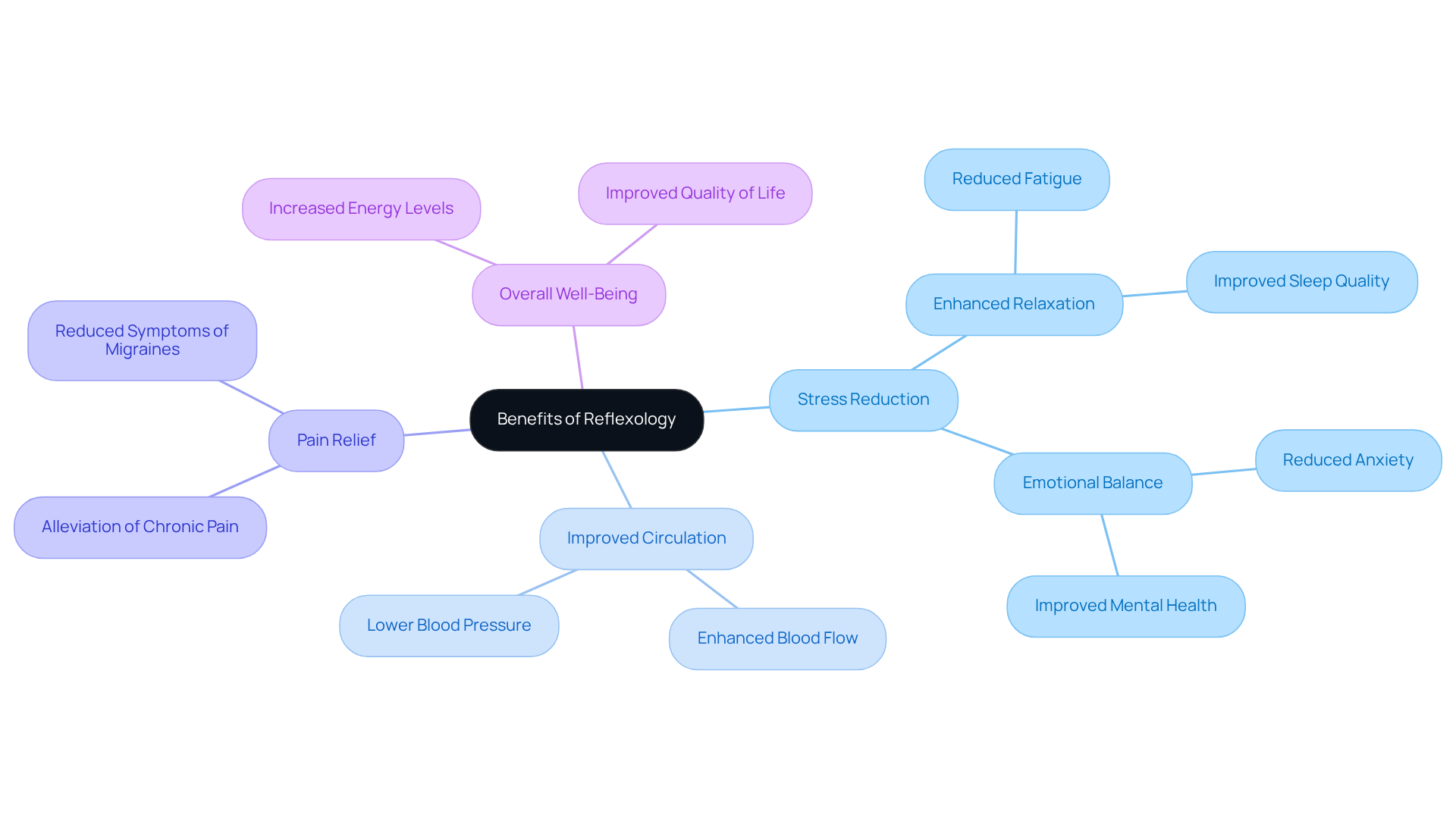
Differentiate Reflexology Techniques: Foot, Hand, and Facial Reflexology
Reflexive therapy, including reflexology in Sydney, encompasses a variety of methods, with hand and facial techniques standing out as the most prevalent. Sole massage, which is a type of reflexology in Sydney, targets reflex areas on the feet's underside that correspond to various organs and systems, making it particularly advantageous due to the extensive reflex zones present in the feet. Research underscores the efficacy of this approach, revealing its potential to significantly alleviate pain and enhance overall well-being. A 2025 review notably highlights its success in mitigating cancer-related pain, affirming the method's value in therapeutic contexts. The historical significance of reflexology in Sydney traces back to ancient Egypt and China, emphasizing its enduring role in health promotion.
In contrast, hand therapy utilizes reflex areas on the hands, offering a practical alternative for those who cannot undergo foot treatments. This technique is especially beneficial for stress relief and can seamlessly integrate into daily routines. Practitioners frequently note that hand therapy provides immediate relaxation, making it a preferred choice for its convenience.
Facial therapy applies gentle pressure to specific facial points, fostering skin health and relaxation. This method not only enhances complexion but also stimulates circulation, contributing to a more youthful appearance. Statistics reveal that clients receiving facial treatments often report improved skin texture and reduced tension, underscoring the technique's effectiveness.
While each reflexology method can be customized to cater to individual client needs, it is crucial to recognize that some individuals may experience side effects, such as soreness or increased thirst, post-treatment. Practitioners stress the importance of communication throughout sessions to ensure treatments are tailored and effective, ultimately enhancing client satisfaction and well-being. Furthermore, proper training and certification for reflexologists are essential to guarantee quality care and successful treatment outcomes.
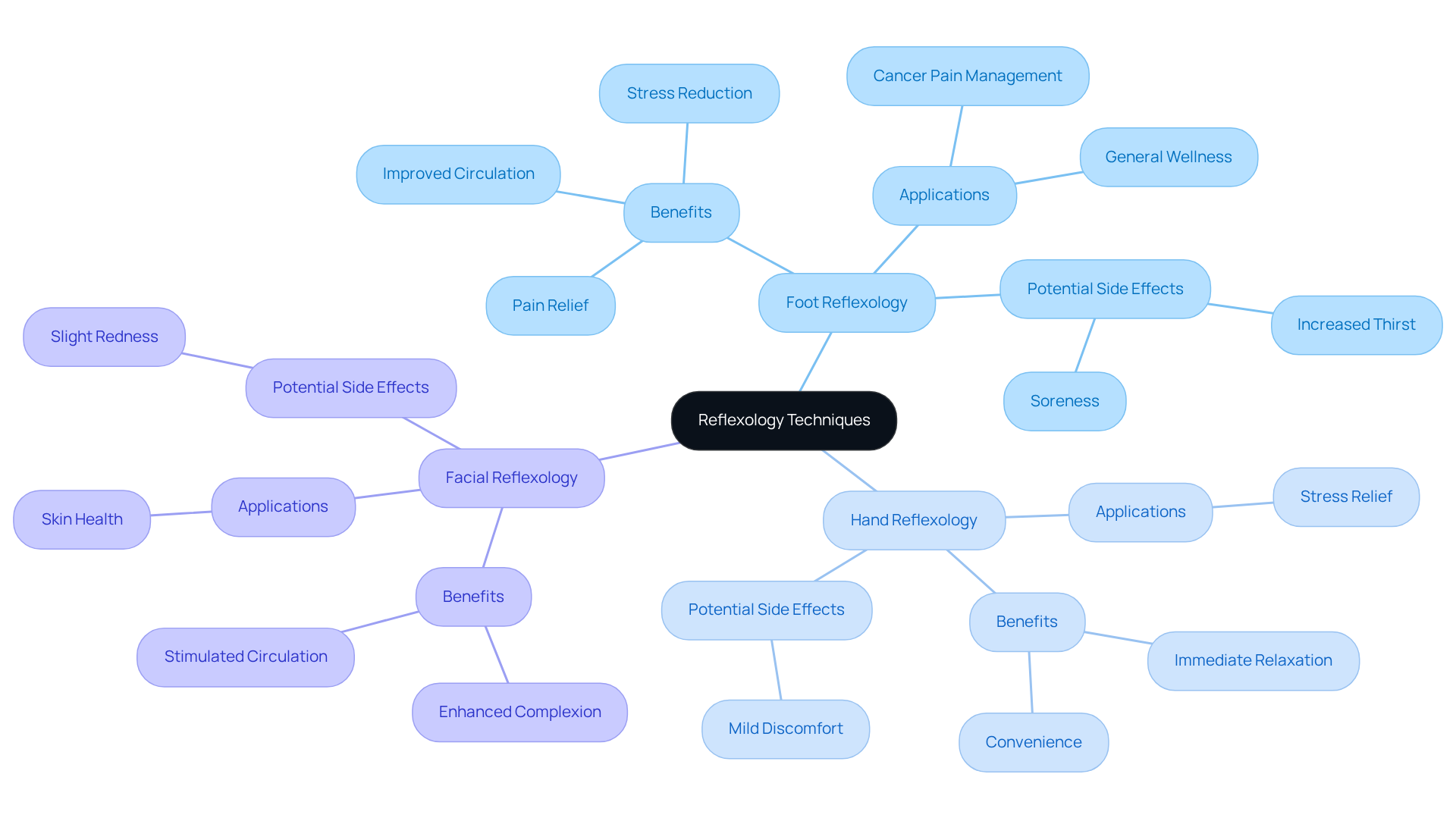
Conclusion
Reflexology in Sydney presents a distinctive approach to wellness, underscoring the vital connection between specific reflex points on the body and overall health. This holistic therapy not only fosters relaxation but also addresses underlying health concerns, positioning it as an invaluable component of integrative health practices. By applying pressure to the feet, hands, and ears, reflexology practitioners activate the body's innate healing processes, thereby reaffirming the significance of this ancient practice within contemporary therapeutic contexts.
The historical roots of reflexology are profound, tracing back over 4,000 years to ancient Egypt and China. The evolution of reflexology techniques encompasses foot, hand, and facial reflexology, each offering unique benefits such as pain relief, enhanced circulation, and improved relaxation. Recent studies substantiate the effectiveness of reflexology, highlighting its role in alleviating symptoms associated with stress, fatigue, and various health conditions.
Incorporating reflexology into a wellness regimen can yield substantial enhancements in both physical and emotional well-being. As awareness of its benefits continues to expand, individuals are urged to delve into this therapeutic practice in Sydney, unlocking the potential for improved health and a profound sense of balance in their lives.
Frequently Asked Questions
What is reflexology?
Reflexology is a holistic therapy that applies pressure to specific areas on the feet, hands, and ears, which are believed to correlate with various organs and systems within the body. It aims to foster healing and restore balance throughout the body.
How does reflexology differ from traditional massage?
Unlike traditional massage, which primarily focuses on muscle relaxation, reflexology seeks to address underlying health issues by concentrating on reflex zones connected to various bodily functions.
What evidence supports the effectiveness of reflexology?
Recent studies, including a systematic review, have shown that reflexology can significantly reduce menopausal symptoms and fatigue, indicating its potential as a non-hormonal intervention for women facing these challenges.
What are the benefits of reflexology in terms of stress and wellness?
Reflexology has been recognized for its ability to reduce stress and enhance overall well-being, making it a valuable complementary therapy in promoting wellness.
How does reflexology promote the body's natural healing processes?
Reflexology encourages the body's natural healing processes by boosting circulation, alleviating tension, and restoring balance through the stimulation of specific reflex areas.
Why is reflexology considered a vital component of integrative health practices?
Reflexology is seen as a vital component of integrative health practices because it offers a comprehensive approach to wellness, appealing to individuals seeking holistic methods to improve their health.


